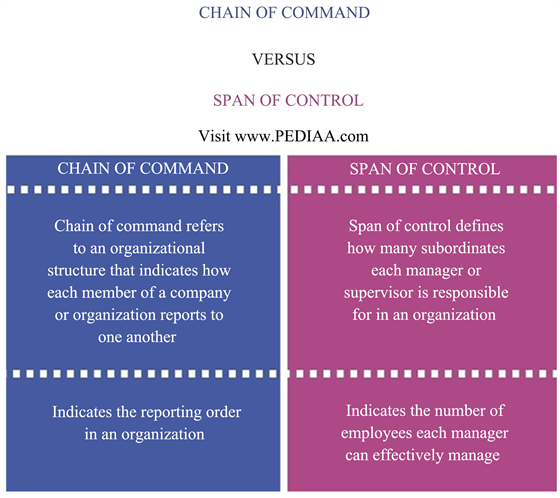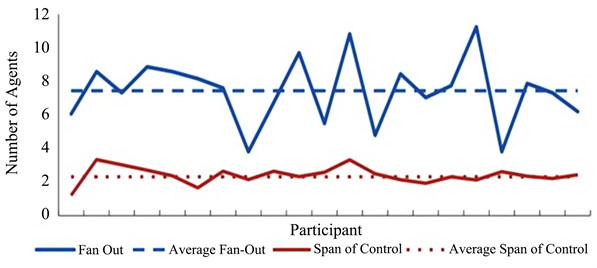Literature Review of Conceptual Span of Control: The Perspective of Emergency Management ()
1. Introduction
The notion of control remains one of the central concepts within the contemporary business environment. The term refers to the optimal ratio between the supervisory workforce and workers under professional control in its general understanding (see Appendix A). This question remains topical for organizations seeking to balance efficiency and supervision. Managers are tasked with organizing and coordinating their teams, which often comprise many people. The maximum number of subordinates frequently measures a leader’s expertise at a given time. The extended span of control is a positive sign of a manager’s development. From this perspective, the increase in subordinates and areas of responsibility is a natural phase of the managerial revolution. Nevertheless, it appears possible to theorize that such an extension will likely have an upper threshold beyond which a leader can no longer sustain the required concentration level.
Accordingly, the idea of the optimal span of control for a manager has become an area of intense for researchers across eras and industries. Its primary application lies in the corporate space, where new effective leadership techniques emerge. The conceptual understanding of the span of control has developed along with the evolution of entrepreneurial thought and philosophy. Similar to other critical notions, this concept’s perception and implementation consider the contextual factors of an organization’s operational environment. This principle acquires additional importance in the 21st century, as globalization and intense technological development render the landscape changeable and sometimes even unpredictable. Accordingly, leading theorists are prompted to examine the applicability of even the best-established concepts in the contemporary environment. More specifically, technological advancements widely available to the organizations of the 21st century have modified the operational environment to a sufficient degree, which forces leaders to redefine their practices and implement new ones in light of the vast emerging opportunities for innovation.
On the other hand, despite the entrepreneurial origin of the concept, it can be extended to other spheres in which robust managerial strategies are required. Emergency management is a vital area that benefits immensely from effective leadership while remaining inherently different from regular business activities. These differences stem from the very core of emergency management as a profession. Unlike many industries, its purpose does not lie in maximizing profits while maintaining customer value and ensuring the positive development of human capital. On the contrary, emergency management organizations operate outside the financial dimension. Their primary purpose is to enable qualified and efficient responses to natural and human-made disasters. Emergency management’s ultimate value is formed by saving human lives and mitigating damage inflicted by a crisis. Therefore, while the span of control can be extended to this area, it must be readjusted to meet emergency response requirements. This paper examines the literary evolution of the span of control across decades, outlining the primary principles of its implementation in emergency management.
2. Review of the Literature
2.1. Ouchie, W. G., & Dowling, J. B. (1974) . Defining the Span of Control. Administrative Science Quarterly, 19(3), 357-365
The first article under review is a seminal work on conceptualizing the span of control. Ouchie and Dowling (1974) concentrate on the varying definitions of the term, attempting to synthesize a common perspective of the respective period. It is important to note that these authors did not coin the notion per se. Ouchie and Dowling (1974) mentioned that the concept had circulated in the corporate environment by the 1970s. However, its interpretation varied across industries and settings. However, this seminal research became a significant step toward the systematization of knowledge regarding the span of managerial control. Ouchie and Dowling (1974) confirm the topical nature of the questions related to the supervisory ratio. The authors discuss various approaches to evaluate the span of control; measuring the closeness of contact is also required, as the two notions are interrelated.
The article under review argues that the view of the span of control as a mere indicator of efficiency and supervision quality needs to be revised, as it does not consider complex environmental factors. Indeed, managers’ schedule comprises varying activities, not limited to follower supervision. The empirical phase of the research conducted by Ouchie and Dowling (1974) indicates that an average leader allocates slightly over half of their work time to actual supervision. However, as observed by the authors, the dominant paradigms of corporate thought of the time should have considered the efforts made by managers to establish a certain level of autonomy, which would reduce the necessity of hands-on supervision.
Therefore, judging the effectiveness of an organization solely by this parameter would be different from the actual quality of management. Nevertheless, such an idea holds special significance in emergency management, as disasters often unfold rapidly. In such a stressful environment, a leader must gain the physical ability to supervise a sizeable interprofessional response team unit. Consequently, meaningful efforts to create an effective impersonal control mechanism become critical.
2.2. Davison, B. (2003) . Management Span of Control: How Wide Is Too Broad? Journal of Business Strategy, 24(4), 22-29
The research discussed in the previous section systemized the existing knowledge, outlining the need for more understanding of the span of control concept. As such, over the following decades, the management philosophy saw a substantial evolution, which resulted in the further development of the conceptual framework. Another seminal piece, which advanced the research in the area, was presented by Davison (2003) . The author tied her research to the emerging challenges which had come along with the millennium. Amid the pursuit of optimization and financial performance, researchers focused on an effective span of control. Davison (2003) states that continuous expansion of this parameter is enabled by basic psychological processes, such as the employees’ subconscious tendency to report to someone and managers’ utter desire for control and influence. The span of control limits is individual for each industry and organization, but similar factors, such as size, financing, innovation, and legal compliance, condition them. Overall, striking and maintaining the balance is an ongoing process that requires constant observation and managerial flexibility.
2.3. Doran, D., McCutcheon, A. S., Evans, M. G., MacMillan, K., Hall, L. M., Pringle, D., Smith, S., & Valente, A. (2004) . Impact of the Manager’s Span of Control on Leadership and Performance
Following the surge in interest, experts across the globe engaged in rigorous research. Doran et al. (2004) reviewed another critical component of managerial success: leadership style. The two concepts were viewed as two indispensable elements of a complex system. As inferred from the research, positive leadership was partially negated by the excessive number of subordinates reporting to a single supervisor. In other words, extending the span of control beyond allowable limits is bound to have negative repercussions. In emergency management, coordination and a clear strategy are crucial, and the right leadership style enables them.
Nevertheless, a leader’s concentration is equally important, and dispersing attention across an excessive number of units can significantly impede this purpose. Doran et al. (2004) state that a leadership style capable of overcoming this barrier needs to be present. Therefore, the emergency management strategy selection must be balanced with the optimum unit distribution policy.
2.4. Bean, J. (2002) . Implementing the Incident Control System in NSW: Span of Control and Management by Objectives. The Australian Journal of Emergency Management, 17(3), 8-16
As discussed above, the span of control lies in the array of fundamental concepts universal to all organizational settings. Once the notion began to attract the attention of researchers, its applicability in specific contexts outside of traditional entrepreneurial activities became a point of immense interest. Bean (2002) relied on the pivotal status of effective communication in emergency management procedures as the foundation for her empirical study. Reviewing existing policies and procedures within the Australian emergency management system revealed a need for a conceptual understanding of the span of control idea. As such, responsible officers acknowledged severe disruptions within the chain of reports, which prevented the effective distribution of information in the field. Despite the acceptable variations outlined by other researchers, Bean (2002) emphasizes the importance of a standardized framework for the emergency response system. Such a uniform approach promotes the autonomy of units, optimizing the pressure on decision-makers in critical situations. However, it requires strong leadership under an appropriate strategy to transmit the vision to subordinates.
2.5. Lane, T. (2006) . The Span of Control for Law Enforcement Agencies. Police Chief, 73(10), 74-83
Law enforcement’s objectives and areas of expertise often intersect with those of emergency response services. For example, Lane (2006) reviewed the span of control concept within law enforcement agencies to determine the prevalent tendencies within the sphere. This area of expertise demonstrated an opposite approach compared to the corporate community. The structure of such agencies tends to be multi-tiered due to the policymaker’s desire to reduce the span of control. In other words, law enforcement practice follows a vertical communication organization in which supervisors have fewer reporting officers. Lane (2006) argues that such a system appears ineffective due to the many impediments to communication and increased pressure on subordinates. The philosophy reflects the distinct characteristics of the 2000s research, which consists of a growing emphasis on the autonomy and comfort of employees (see Appendix B). However, in emergency management, the nature and magnitude of the tasks call for a different approach, which is unlikely to correspond to regular business strategies.
2.6. Zoller, Y. J., & Muldoon, J. (2020) . Journey of a Concept: Span of Control—The Rise, the Decline, and What Is Next? Journal of Management History, 26(4), 515-533
The span of control, among other critical management concepts, has seen decades of rigorous research and evolution conditioned by the changeable external context. The article by Zoller and Muldoon (2020) aims to review this long path, describing the present understanding of the term and outlining the potential avenues for its future. Despite its evident practical value, the authors observe a severe decline in the research significance of the concept (see Appendix C). The increasing complexity of the managerial landscape, combined with the rapidly expanding selection of leadership strategies, has contributed to the indeterminacy, which rendered the notion confusing. Vertical and flattened organizations have been at the center of heated debates. The second format now prevails, leading to the general increase in the span of control implemented in modern organizations by default. Furthermore, modern technology is expected to broaden further the average span of power in the upcoming years.
3. Conclusion
Ultimately, the span of control has been the subject of topical discussions within the corporate community for several decades, but its research significance has decreased recently. The contemporary philosophy of corporate thought favors flattened organizations with optimized staffing policies, leaving little or no room for the span of control alternatives. As such, this parameter has been continuously growing in most modern companies. Being supported by technological development, the tendency is projected to persist in the 2020s. However, emergency management should avoid facing typical trends, as its mission and specificities dictate a different approach. The vertical structure is not inherently inappropriate in this highly stressful and unpredictable environment. However, its execution must rely on a considerate choice of leadership strategy, enabling the balance between the two elements of the managerial framework.
Appendix A: Span of Control

Note. Adapted from Scott, C. (2022, October 13) . An HR’s guide to calculating span of control. AIHR. https://www.aihr.com/blog/calculating-span-of-control/.
Appendix B: Chain of Command versus Span of Control

Note. Adapted from Hasa (2021, September 23) . What Is the Difference between Chain of Command and Span of Control? PEDIAA. https://pediaa.com/what-is-the-difference-between-chain-of-command-and-span-of-control/.
Appendix C: Journey of a Concept: Span of Control—The Rise, Decline, and What Is Next?

Note. Adapted from Human Span-of-Control in Cyber Operations: An Experimental Evaluation of Fan-Out (n.d.) . ResearchGate|Find and Share Research. https://www.researchgate.net/publication/290394297_Human_span-of-control_in_cyber_operations_An_experimental_evaluation_of_fan-out/figures?lo=1.